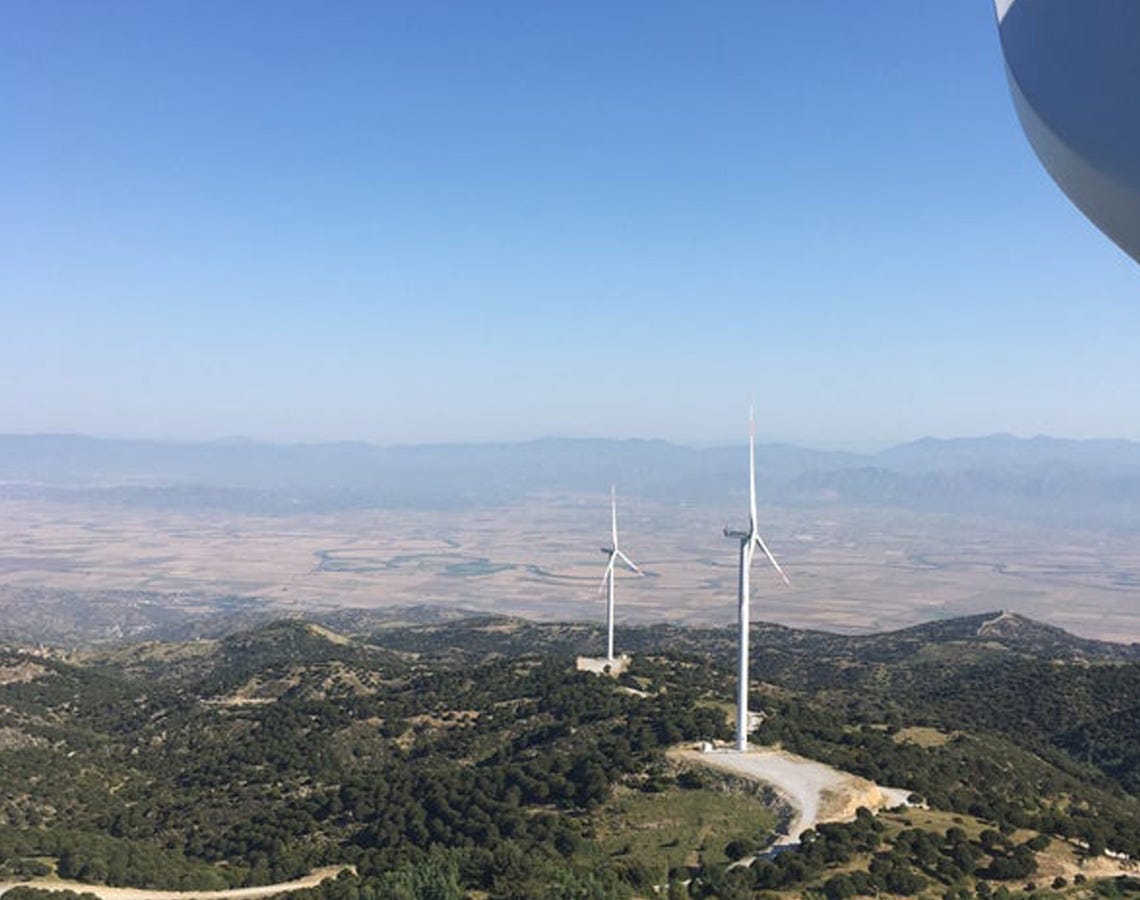Bağarası WPP (46 MWe), owned by Genpa Enerji, located in Aydın, Türkiye
Managing a wind farm is like juggling while riding a unicycle. You're keeping multiple turbines in motion, each demanding equal attention, never knowing which one might fail next. Drop a single ball and the whole performance suffers.
This balancing act becomes manageable when you can see problems developing before they become emergencies that halt turbines. Over the last 12 months, Genpa Enerji's site team and the maintenance service provider achieved exactly that by responding to seven early warnings from Kavaken which any other system had not detected.
About Genpa Enerji
Genpa Enerji operates as an independent power producer in the renewable energy sector, boasting an installed capacity of nearly 200 MW. Their portfolio primarily comprises wind farms, supplemented by floating solar and hydropower installations. The company exemplifies organizational efficiency, managing its wind farms through a lean, experienced team and a service agreement with the turbine manufacturer.
“Kavaken has become indispensable for our operations: we can live-track our plants, gain insights into past performance and future risks, and now we have KEN, our 24/7 assistant. Thanks to the team for the comfort you bring!” — Hakan ÖZ | General Manager at Genpa Enerji
The Cases
Generator Bearing Cases
Take the generator bearing issues at two turbines at two of the wind farms. Both turbines showed signs of overheating in their rear bearings. Trend-based analysis caught the early temperature deviations. In both cases, maintenance crews cleaned grease supply lines and drainage systems. The problems disappeared immediately.
Hydraulic Systems Cases
Three separate hydraulic system flags across two separate turbines followed the same pattern. At one of the turbines, the same issue appeared twice—once in April, then again in December 2024. Kavaken detected abnormal oil temperature increases months before they became critical.
Each time, the solution was straightforward: low oil levels needed topping up. But here's what matters—these weren't sudden drops. The oil levels depleted gradually, and temperatures rose slowly. Conventional straight-line threshold-based monitoring would have missed these trends until damage was already occurring.
Gearbox Case
The most complex case involved a gearbox. Kavaken flagged both overheating oil and dropping pressure—two related problems that pointed to the same root cause.
On-site inspection revealed low oil levels with no external leakages observed. The crew replenished the gearbox oil to restore proper levels and continued monitoring temperature and pressure readings to evaluate system response. Early intervention prevented what could have been a catastrophic gearbox failure—the kind that keeps turbines offline for weeks and costs hundreds of thousands in repairs.
Over-Lubrication Case
Not every problem involves too little lubricant. In one case, Kavaken detected a generator bearing overheating caused by over-lubrication. The maintenance crew had to reduce lubrication frequency, not increase it.
Following Kavaken's early warning, the maintenance crew performed a detailed inspection of the generator rear bearing. During the intervention, they cleaned the grease supply lines and decreased the lubrication frequency due to signs of over-lubrication. The generator slip ring filter was also replaced.
What makes this case particularly revealing is that routine oil analysis conducted as part of scheduled maintenance showed no indication of developing issues, let alone SCADA or CMS alarms. The anomaly was exclusively detected by Kavaken's trend analysis
What These Cases Prove
Seven flags. Seven confirmed issues. Seven successful interventions. Zero unscheduled stops. Zero lost production and revenue.
Each case followed the same pattern: Kavaken detected early signs of problems that were not otherwise detected. Genpa and the maintenance service provider acted on these early warnings promptly, without delay. Problems were solved with simple, low-cost interventions.
The alternative would have meant emergency repairs, unscheduled downtime, and lost production. Instead, routine maintenance visits handled everything during planned service windows.
Predictive maintenance isn't about predicting the future. It's about buying time—time to plan, time to source parts, time to schedule crews, and time to prevent small problems from becoming big ones.
Genpa Enerji's experience shows what happens when maintenance teams trust data-driven insights and act before alarms sound. They keep turbines running, costs down, and production steady.
This is what diligent operations management looks like in practice: treating early warnings as opportunities to prevent problems, not just predictions to monitor.









